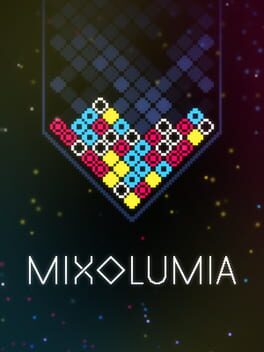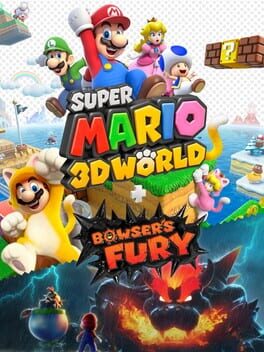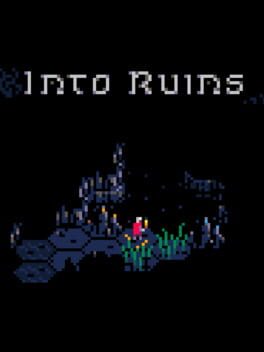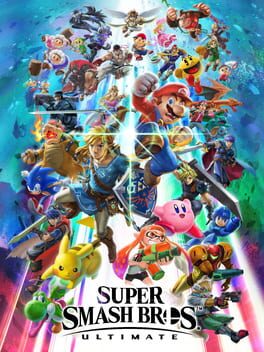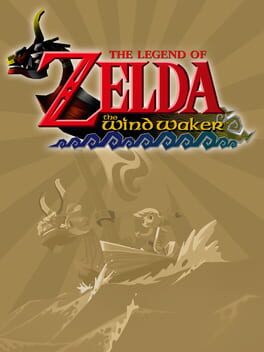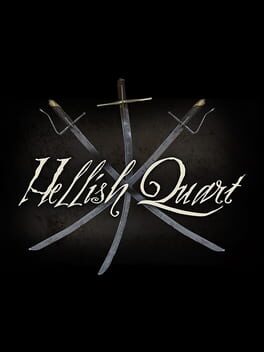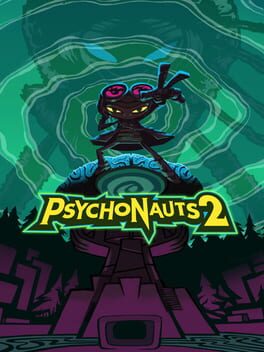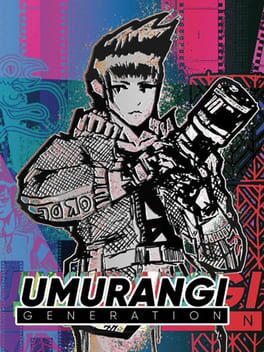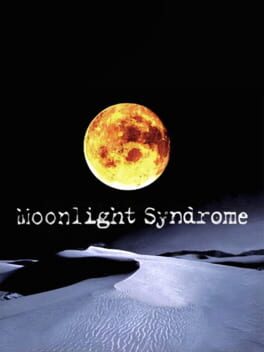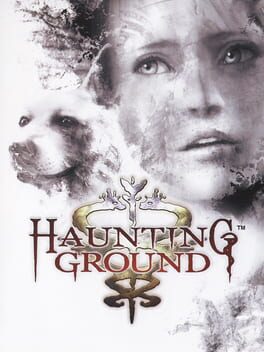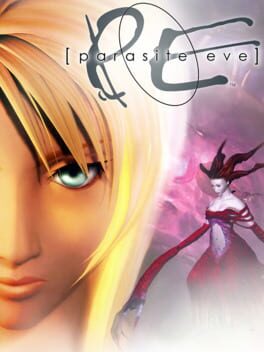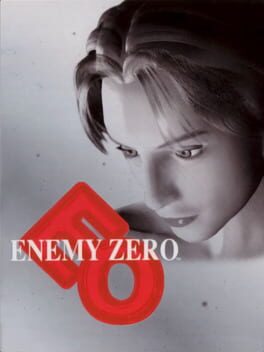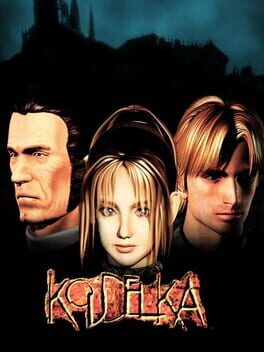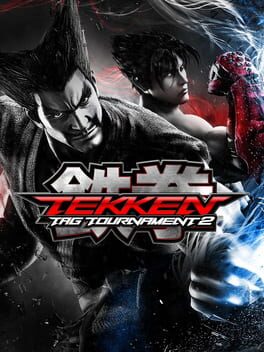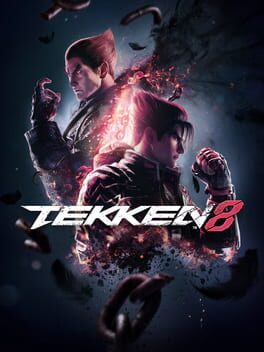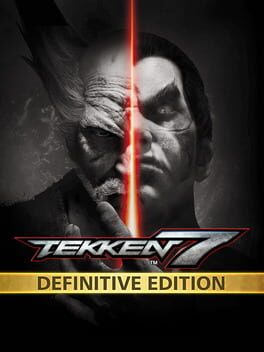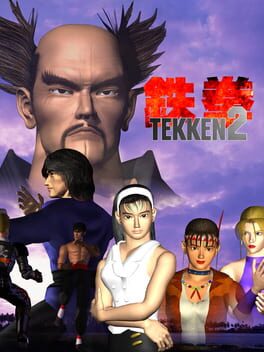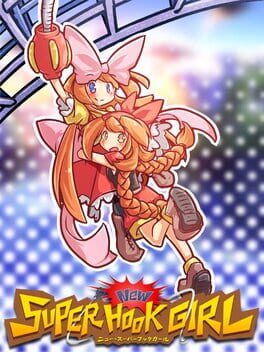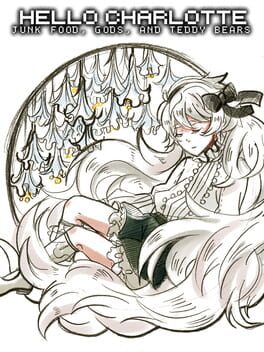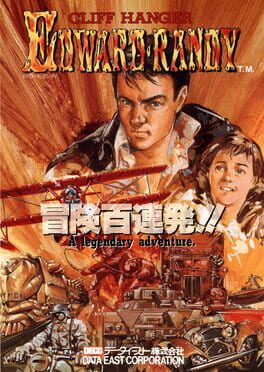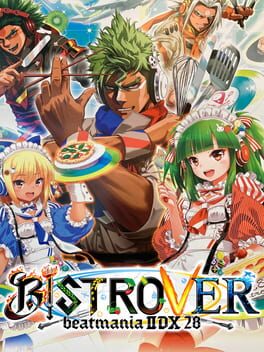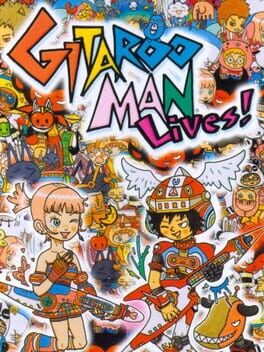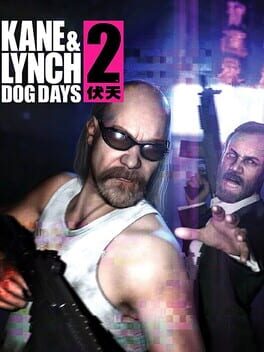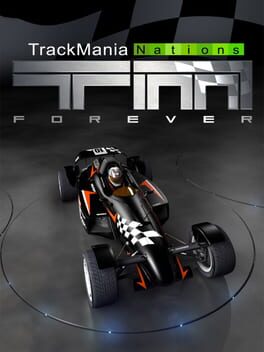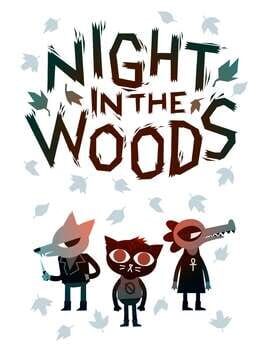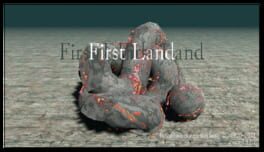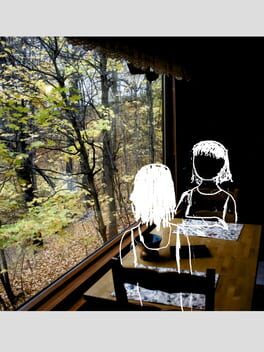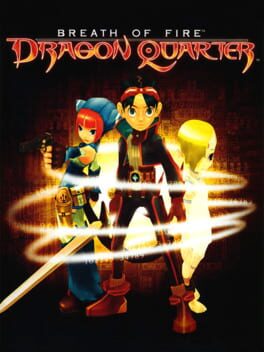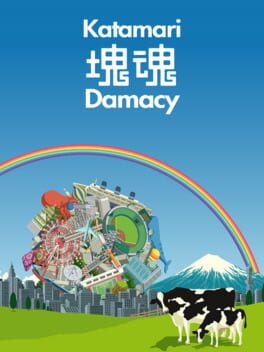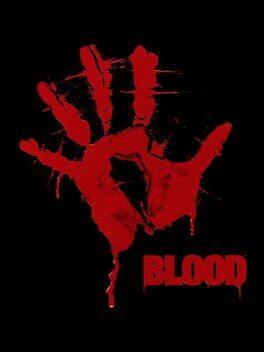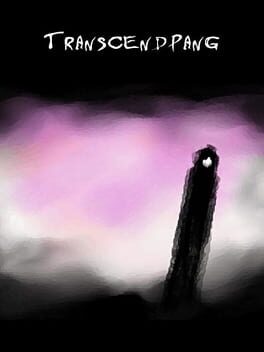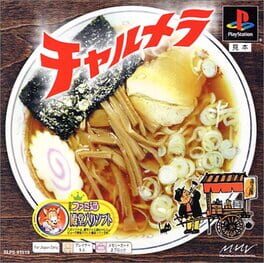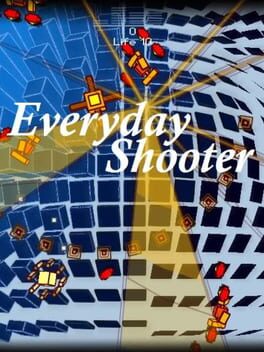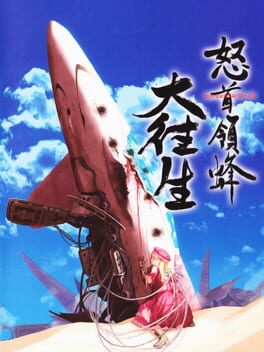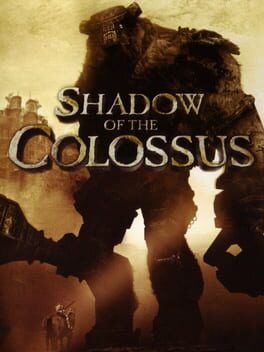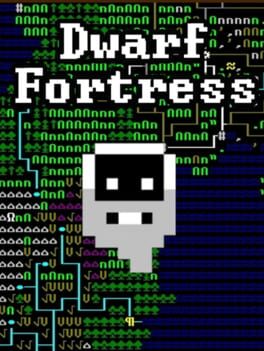Liduri
14 reviews liked by Liduri
Mixolumia
2020
No logra el famoso "efecto Tetris" pero, a diferencia de tantas réplicas y variaciones que recibió aquel "juego perfecto", Mixolumia sí logra ese placer de pensar espacialmente de una forma única en un juego de puzzles en tiempo real que tenía (y sigue teniendo) Tetris.
Los errores ahora no tienen una opción de corrección inmediatamente reconocible. Esas correcciones son fruto de acciones en cadena (otro puntazo de Mixolumia) que en un principio parecen fruto del azar pero de que muy de a poco vamos controlando.
Y es ahí cuando el juego brilla. Ahora el interés del setup no es "dejar 4 espacios libres a la derecha", es acumular errores para lograr combos, la mejor forma de lograr altas puntuaciones, ya que Mixolumia termina antes de que perdamos y ese sistema se vuelve necesario si tenemos interés en subir en el ranking (OTRO punto por encima de Tetris, donde mejorábamos, básicamente, afilando nuestros reflejos).
Los errores ahora no tienen una opción de corrección inmediatamente reconocible. Esas correcciones son fruto de acciones en cadena (otro puntazo de Mixolumia) que en un principio parecen fruto del azar pero de que muy de a poco vamos controlando.
Y es ahí cuando el juego brilla. Ahora el interés del setup no es "dejar 4 espacios libres a la derecha", es acumular errores para lograr combos, la mejor forma de lograr altas puntuaciones, ya que Mixolumia termina antes de que perdamos y ese sistema se vuelve necesario si tenemos interés en subir en el ranking (OTRO punto por encima de Tetris, donde mejorábamos, básicamente, afilando nuestros reflejos).
Resources are now even more conveniently placed than they were. Before, if there was snow you'd find chilis nearby. Getting into a dangerous place? Here are some weapons. But now everything is there for you. This rock that previously was just lying around is now something you can use to build yourself a weapon. The bombs that were previously part of Link's device are now an item that only grows for Link to use it. Elemental items now are there to build elemental weapons. Arrows, berries... There are more than ever, because it's Link's only way to do things that he could previously do just fine. The world as a resource, not as a place.
The exaggerated gamification of everything that was previously in the game doesn't help either. You found a new place? Don't worry here's the name and your "New discovery" title so that you feel like you accomplished something. The two hundred wells across the map are no more than a different way to provide you with more resources. The minerals you find? They're another currency you exchange for more items. The poe, which are lost souls that you find in the underground? More currency to make your life easier there. The towers? They're not a a place to conquer anymore, but a chore: do this and that, talk to this person, get in from below. The batteries, wings, even the pots, are more items in your inventory that you get from a fucking gacha. It's the carrot and stick, clearer than ever. Congratulations, you are a donkey.
Sure, the new mechanics are great by themselves. But what can you do with Rewind that you could not with Stasis and some imagination? Did we really need Ascend in a game where you can climb virtually any surface? I get that being able to build giant mechs with auto-aim is super cool but how does that translate to the actual world and your interaction with it? When, realistically, are you going to need that and why? More importantly, how does the game give you the pieces needed to build that? Let me answer this last one: conveniently placed items in a clearly defined zone that you can recognise it from far away and a fucking gashapon. And only Link can make use of them. Where's the illusion of a world and the never-seen-before ecosystem? Which kind of place works like that? This is not a world anymore, it's a power fantasy. As imaginative as the new mechanics can be, they don't work in the context of the game because they were never necessary to begin with. They're the definition of over-engineering: trying to fix something that was never broken in order to justify the existence of a product that no one asked for and serves no purpose. If you look at each element by itself it's hard to argue that they're not fun and entertaining because it's small little challenges and rewards that move you forward built on top of well made systems that have already been proven to work in a full game, but is that really enough? Everything in the game works in a vacuum because, in the end, everything is based well-thought, well-built mechanics on top of something that we found marvelous and fascinating when we first experienced this in 2017. But where's the charm? Where's the spark? Where's the wonder? Is there any real thought behind it other than mindlessly expanding what we previously saw? What's really new to experience or how do our new ways of interaction make Hyrule seem fascinating and challenging again?
Not only is it greatly flawed but, fundamentally, TOTK feels the same as BOTW. And thus it doesn't.
The exaggerated gamification of everything that was previously in the game doesn't help either. You found a new place? Don't worry here's the name and your "New discovery" title so that you feel like you accomplished something. The two hundred wells across the map are no more than a different way to provide you with more resources. The minerals you find? They're another currency you exchange for more items. The poe, which are lost souls that you find in the underground? More currency to make your life easier there. The towers? They're not a a place to conquer anymore, but a chore: do this and that, talk to this person, get in from below. The batteries, wings, even the pots, are more items in your inventory that you get from a fucking gacha. It's the carrot and stick, clearer than ever. Congratulations, you are a donkey.
Sure, the new mechanics are great by themselves. But what can you do with Rewind that you could not with Stasis and some imagination? Did we really need Ascend in a game where you can climb virtually any surface? I get that being able to build giant mechs with auto-aim is super cool but how does that translate to the actual world and your interaction with it? When, realistically, are you going to need that and why? More importantly, how does the game give you the pieces needed to build that? Let me answer this last one: conveniently placed items in a clearly defined zone that you can recognise it from far away and a fucking gashapon. And only Link can make use of them. Where's the illusion of a world and the never-seen-before ecosystem? Which kind of place works like that? This is not a world anymore, it's a power fantasy. As imaginative as the new mechanics can be, they don't work in the context of the game because they were never necessary to begin with. They're the definition of over-engineering: trying to fix something that was never broken in order to justify the existence of a product that no one asked for and serves no purpose. If you look at each element by itself it's hard to argue that they're not fun and entertaining because it's small little challenges and rewards that move you forward built on top of well made systems that have already been proven to work in a full game, but is that really enough? Everything in the game works in a vacuum because, in the end, everything is based well-thought, well-built mechanics on top of something that we found marvelous and fascinating when we first experienced this in 2017. But where's the charm? Where's the spark? Where's the wonder? Is there any real thought behind it other than mindlessly expanding what we previously saw? What's really new to experience or how do our new ways of interaction make Hyrule seem fascinating and challenging again?
Not only is it greatly flawed but, fundamentally, TOTK feels the same as BOTW. And thus it doesn't.
Pizza Tower
2023
-With the nerves to the limit, but with a smooth movement, justified by the style of animation. I don't know, I see it as a bit contradictory to the crazy and animated world that the game poses
-I haven't played any Wario Land, but here the approach of the double level design (hit and run) in communion with the two possible forms of mobility, until the two collide with each other, is super interesting.
but, there is the problem, that they collide in what I intuit is an impossibility to get rid of their formative references in terms of a "genre", called "the platformers".
The idea of scoring through collecting and other chores at levels that force you to fluctuate between jumping, speed and momentum does not seem very appropriate to me if at the least I fail I have to repeat a sequence of three heights and four platforms, for very funny and schizophrenic that are the crash and fall animations.
Between the seams of the game, a speerun logic almost appears?
I don't see the great Peppino spaghetti being an avatar of total control in chaos, rather I see him suffering from chaos, heck, that's how the protagonist seems to be presented, as someone on the verge of sanity, breaking with everything he knows. crosses.
-So vacuously it has been possible to attribute to Signalis that its structure is a mixture without substance (partially correct, but I don't see it badly for a game whose one of its main reasons is "memory" as a concept) beyond the visual, I think this could perfectly apply to Pizza Tower: the weight, the speed and the alleys and unthinkable traps of Sonic with the framework of Wario Land? (I intuit, I reiterate that I have not played)
But I find another similarity with Sonic: the divergence between character concept and game concept.
you already know
Speed vs Caution in Sonic
Chaos and humor vs Control and some precision in Pizza Tower
Am I the only one who feels this?
-The mixture is quite satisfactory, but why would that be enough?
-usually the internal coherences matter very little to me, and I hate applying the operational sense of the real world, I prefer the expression and the personality, at any cost. but here I find the expression in the same way as some contemporary games that rely entirely on the animations of their characters. And that's not bad at all, it's completely fine but I didn't find a situation where the comedy came from the game design instead of the characters and their animations. It's a bit picky, but I feel the same way I do when I watch one of the new Pixar-like CGI animated movies, with little interest in cinematography and space-time relationships.
I love the energy of this game, but at the same time it leaves me super cold
-I haven't played any Wario Land, but here the approach of the double level design (hit and run) in communion with the two possible forms of mobility, until the two collide with each other, is super interesting.
but, there is the problem, that they collide in what I intuit is an impossibility to get rid of their formative references in terms of a "genre", called "the platformers".
The idea of scoring through collecting and other chores at levels that force you to fluctuate between jumping, speed and momentum does not seem very appropriate to me if at the least I fail I have to repeat a sequence of three heights and four platforms, for very funny and schizophrenic that are the crash and fall animations.
Between the seams of the game, a speerun logic almost appears?
I don't see the great Peppino spaghetti being an avatar of total control in chaos, rather I see him suffering from chaos, heck, that's how the protagonist seems to be presented, as someone on the verge of sanity, breaking with everything he knows. crosses.
-So vacuously it has been possible to attribute to Signalis that its structure is a mixture without substance (partially correct, but I don't see it badly for a game whose one of its main reasons is "memory" as a concept) beyond the visual, I think this could perfectly apply to Pizza Tower: the weight, the speed and the alleys and unthinkable traps of Sonic with the framework of Wario Land? (I intuit, I reiterate that I have not played)
But I find another similarity with Sonic: the divergence between character concept and game concept.
you already know
Speed vs Caution in Sonic
Chaos and humor vs Control and some precision in Pizza Tower
Am I the only one who feels this?
-The mixture is quite satisfactory, but why would that be enough?
-usually the internal coherences matter very little to me, and I hate applying the operational sense of the real world, I prefer the expression and the personality, at any cost. but here I find the expression in the same way as some contemporary games that rely entirely on the animations of their characters. And that's not bad at all, it's completely fine but I didn't find a situation where the comedy came from the game design instead of the characters and their animations. It's a bit picky, but I feel the same way I do when I watch one of the new Pixar-like CGI animated movies, with little interest in cinematography and space-time relationships.
I love the energy of this game, but at the same time it leaves me super cold
This thing is good, but it is also the epitome of this increasingly predominant logic that Nintendo has with its present and its past, a toymaker one, and not a craftsman who cares with affection for his games and ideas put into his creations, rather like that of a luxury company that offers disposable and immediate products with a careful presentation.
Here is the new one of the toy known as "SUPER MARIO 3D WORLD WOHHOHHUHOOO", with improvements that will make you not want to go back to the original Wii U, in fact, they do not want you to, nor will they want you to go back to this version of switch when remaster it again on their next generation of hardware.
This logic extends to the entire game itself because its approach to action, while satisfying on the spot, also reveals how little real thought went into the designers working on such a solid and simple foundation as Super Mario. 3d Land- That game was in good health, but it was addictive like pringles-.
Why is there a multitasking button [Run], [Use Powerup],[Pick Up Player]
[Throw Things/Player] on a controller with so many buttons?
Probably no one thought of it, but in 3DLand it worked, so here too, right?
Yeah, no, the truth is that it doesn't work that well. With so many different power ups that alter the way the game space is operated, objects to throw, enemies that need to be dealt with in different ways, and, most importantly, a multiplayer in which all this is multiplied and also adds the possibility picking and throwing other players to win levels in the (seemingly) funniest and most creative way... One can't rely on a multitasking button, it's just impossible. Because obviously it's not just about the actions you can perform with your character, but how those actions relate to and impact the environment, or in this case -action platforms- what the environment demands of you as a player.
And precisely that, the environment, the levels, the world, Why is this game called 3D WORLD?
Not even the world map, probably the freest interplay of all the level-structured Super Marios, offers a sense of the world. It's a minor detail, and I don't have much problem with this, I think that the sensation of the digital world is achieved through more resources than simple physical literalness, but I also think it illustrates another point that was dealt with on autopilot.
The levels capture very well the texture of super mario in my opinion: color, fluffiness, sound... Joy as a whole.
But also full of ideas that, while creative and enjoyable, are also disposable almost the moment they are presented, more articulated around the mobility/attack variations provided by the Powerups than the jump itself, and that's a problem, because if you don't get the necessary powerup in advance the level design turns out to be a little soft, and that coupled with the problems of the multitasking button leaves some absurdly frustrating moments for a game that, if it had a better interactive layout, would be even easier than 3D LAND. Apart from the moments where the game tries to create a directed action sequence in which we have to fight a boss or stay on a platform on rails while the camera beats us - you go out of frame, you're dead - they make me sick, There is no redemption there, neither here nor in almost any platform game, it is an absurd way of killing pacing.
In the end, I liked the game, and I give it 4/5 because of Bowsers Fury and also because from time to time I actively look for a Toylogic game, that is just plain fun. I will probably come back to this game with friends.
--------------------------------------
I haven't been a Nintendo believer for a decade, but this way of supercharging its sequels with mechanics that born and die in the moment which a level takes place is a super evil company move
"duh, Nintendo is a company"
Yes, but even so I would dare to say that Nintendo has not had its own ideas or approaches since the 80s. Rather, it has offered quite innovative pieces of hardware (Nintendo DS?) to share -or even take advantage of- the ideas of others producing works of studies external or minor that would enrich their own corporate image as well as their catalogs
"well, sure, but Nintendo was always like that deep down"
Here is the new one of the toy known as "SUPER MARIO 3D WORLD WOHHOHHUHOOO", with improvements that will make you not want to go back to the original Wii U, in fact, they do not want you to, nor will they want you to go back to this version of switch when remaster it again on their next generation of hardware.
This logic extends to the entire game itself because its approach to action, while satisfying on the spot, also reveals how little real thought went into the designers working on such a solid and simple foundation as Super Mario. 3d Land- That game was in good health, but it was addictive like pringles-.
Why is there a multitasking button [Run], [Use Powerup],[Pick Up Player]
[Throw Things/Player] on a controller with so many buttons?
Probably no one thought of it, but in 3DLand it worked, so here too, right?
Yeah, no, the truth is that it doesn't work that well. With so many different power ups that alter the way the game space is operated, objects to throw, enemies that need to be dealt with in different ways, and, most importantly, a multiplayer in which all this is multiplied and also adds the possibility picking and throwing other players to win levels in the (seemingly) funniest and most creative way... One can't rely on a multitasking button, it's just impossible. Because obviously it's not just about the actions you can perform with your character, but how those actions relate to and impact the environment, or in this case -action platforms- what the environment demands of you as a player.
And precisely that, the environment, the levels, the world, Why is this game called 3D WORLD?
Not even the world map, probably the freest interplay of all the level-structured Super Marios, offers a sense of the world. It's a minor detail, and I don't have much problem with this, I think that the sensation of the digital world is achieved through more resources than simple physical literalness, but I also think it illustrates another point that was dealt with on autopilot.
The levels capture very well the texture of super mario in my opinion: color, fluffiness, sound... Joy as a whole.
But also full of ideas that, while creative and enjoyable, are also disposable almost the moment they are presented, more articulated around the mobility/attack variations provided by the Powerups than the jump itself, and that's a problem, because if you don't get the necessary powerup in advance the level design turns out to be a little soft, and that coupled with the problems of the multitasking button leaves some absurdly frustrating moments for a game that, if it had a better interactive layout, would be even easier than 3D LAND. Apart from the moments where the game tries to create a directed action sequence in which we have to fight a boss or stay on a platform on rails while the camera beats us - you go out of frame, you're dead - they make me sick, There is no redemption there, neither here nor in almost any platform game, it is an absurd way of killing pacing.
In the end, I liked the game, and I give it 4/5 because of Bowsers Fury and also because from time to time I actively look for a Toylogic game, that is just plain fun. I will probably come back to this game with friends.
--------------------------------------
I haven't been a Nintendo believer for a decade, but this way of supercharging its sequels with mechanics that born and die in the moment which a level takes place is a super evil company move
"duh, Nintendo is a company"
Yes, but even so I would dare to say that Nintendo has not had its own ideas or approaches since the 80s. Rather, it has offered quite innovative pieces of hardware (Nintendo DS?) to share -or even take advantage of- the ideas of others producing works of studies external or minor that would enrich their own corporate image as well as their catalogs
"well, sure, but Nintendo was always like that deep down"
Into Ruins
2022
Lo comprimidos que están sus conceptos y bien conectados sus sistemas lo hacen un juego brillante por puro diseño minimalista. Su gran componente de azar hace cada partida distinta y le da un punto de mala leche muy divertido. Una partida más o menos controlada puede terminar en dos turnos desafortunados, pero es esa sensación de que el siguiente nivel puede ser el último lo que te obliga a probar cosas, a arriesgarte, a dar uso a las escasas herramientas que te encuentras, a tomar decisiones. Si mueres, pues total, ya a la siguiente saldrán las cosas.
Solo hay un par de detalles que me faltan. El primero es un punto más de aventura. Más misterios, trampas, algún secreto, alguna sorpresa. Lo segundo su final, que me esperaba otra cosa, pero tampoco me disgusta por lo coherente que es con la filosofía del resto del juego: breve y al grano. Ojalá más Into Ruins y menos Vampire Survivors.
Solo hay un par de detalles que me faltan. El primero es un punto más de aventura. Más misterios, trampas, algún secreto, alguna sorpresa. Lo segundo su final, que me esperaba otra cosa, pero tampoco me disgusta por lo coherente que es con la filosofía del resto del juego: breve y al grano. Ojalá más Into Ruins y menos Vampire Survivors.
If you put me in a room of trash talkers who want to play this particular Smash Bros., I'll gladly pick Samus and snipe people like a cheap bastard and have a great time. (And by "play," I mean a multiplayer brawl, not a stripped-down one-on-one fight. I'm sorry tourney nerds, but Smash is an uninteresting one-on-one fighter. You suck the fun and uniqueness out of Smash Bros. when you sanitize it in the name of some conservative notion of competition.)
But from a critical standpoint, Super Smash Bros. Ultimate has been spit-polished to the point where it registers as very made-by-committee and antiseptic. Its distinguishing characteristic is a ridiculous amount of content (a word that shouldn't be confused with creativity). The number of characters is obscene when one recalls the main appeal of Smash Bros.: pitting the most iconic and popular Nintendo characters against each other. Now everyone shows up for the sake of random fan demands and Nintendo's almighty bottom line. All the stars from the non-Nintendo games, as well as the Nintendo-branded characters who don't deserve to be mentioned in the same breath as your Marios and Kirbys, betray the notion that we're watching larger-than-life Nintendo figures fight it out. I don't care about Ryu from Street Fighter trading blows with Cloud from Final Fantasy. Does Ryu really need to be in another game? I can raise the same question for others. Ultimate may not be an open world game, but it champions a similar type of quantity-over-quality philosophy. Meanwhile, as fine-tuned as the controls are in Ultimate, I still vastly prefer the faster flow and more dangerous vibes of Super Smash. Bros Melee (which introduced the most fascinating stages in the series: Hyrule Kingdom and Brinstar Depths). Ultimate feels quite safe despite the lofty implications of its title.
But from a critical standpoint, Super Smash Bros. Ultimate has been spit-polished to the point where it registers as very made-by-committee and antiseptic. Its distinguishing characteristic is a ridiculous amount of content (a word that shouldn't be confused with creativity). The number of characters is obscene when one recalls the main appeal of Smash Bros.: pitting the most iconic and popular Nintendo characters against each other. Now everyone shows up for the sake of random fan demands and Nintendo's almighty bottom line. All the stars from the non-Nintendo games, as well as the Nintendo-branded characters who don't deserve to be mentioned in the same breath as your Marios and Kirbys, betray the notion that we're watching larger-than-life Nintendo figures fight it out. I don't care about Ryu from Street Fighter trading blows with Cloud from Final Fantasy. Does Ryu really need to be in another game? I can raise the same question for others. Ultimate may not be an open world game, but it champions a similar type of quantity-over-quality philosophy. Meanwhile, as fine-tuned as the controls are in Ultimate, I still vastly prefer the faster flow and more dangerous vibes of Super Smash. Bros Melee (which introduced the most fascinating stages in the series: Hyrule Kingdom and Brinstar Depths). Ultimate feels quite safe despite the lofty implications of its title.
De pasado y futuro, nostalgia y cambio. No podemos estancarnos en el éxito de Ocarina, hay que seguir adelante. Hundamos Hyrule, demos la batuta a los niños. Pero ojo, que la leyenda es eterna y permanece. La trifuerza reaparece, la historia se repite. Ganon atacará, Link vestirá ropajes verdes y empuñará la espada maestra en rescate de Zelda. Y resolveremos amasijos de puzzles ambientales con llaves y puertas, ítem de turno y boss fight pertinente mal llamados mazmorras, claro. Destino, tradición, etcétera.
-----
Hace años no me convencía del relato antinostalgia de Wind Waker que repitiese la historia del héroe a pies juntillas. Que Tetra dejase de ser ella, con todo su carácter e iniciativa, desde que se revelase su identidad. Lo encontraba contradictorio, tanto soplar el viento y navegar hacia el futuro y no anclarse en el pasado pero luego ropas verdes, espada de luz y Zelda a cumplir su rol de damisela en apuros. Pero tras esta rejugada he dejado de verlo así: una vez vencido el mal los niños son liberados de toda atadura y navegarán libres el mar en busca de su propia tierra, su propio futuro, y Hyrule mientras tanto sepultado bajo las aguas. Que la historia se repita cada cierto tiempo es precisamente lo que la vuelve leyenda. Porque es más grande que el tiempo, inmune a derivas y cambios. Solo eso da sentido a las profecías, a la existencia de dioses y poderes mágicos ancestrales. Es el destino. Y ahora creo que ambas filosofías pueden convivir.
Lo que sí empaña el alegato es el tradicionalismo en diseño, que no termina de dejar volar al juego, lastrando este nuevo mundo con las conveniencias y convenciones de siempre. The Wind Waker mira hacia adelante pero solo a medias, cuando conviene. Y tras él vendría Twilight Princess, la más conservadora de todas las entregas principales en la historia de la saga. Como para fiarse de la palabra de Nintendo. Así de convencidos estaban en su discurso.
-----
El Zelda con más carácter. A cambio de solemnidad, sentido del humor. Marcadísimas expresiones faciales para mayor expresividad de los personajes y una inteligencia artificial súper reforzada para mayor dinamismo en combate. El resultado, casi siempre, comicidad y carisma. Y lo que más me ha llamado la atención en esta rejugada: hasta qué punto es juguetón The Wind Waker. No ya solo los enemigos (que pierden y buscan sus armas, que reaccionan cuerpo a cuerpo, que se queman solos o golpean entre ellos), sino la fluidez del combate, con puntuaciones musicales a cada espadazo, botón de contraataque, ataques por la espalda... Más: los saltitos del barco en el mar, los combates en barco a cañonazos, el uso de la hoja para planear (antecedente de la archiempleada paravela de Breath of the Wild). ¡Hasta recoger ítems! Con jarrones o enemigos que desparraman un buen puñado de rupias y objetos con tiempo limitado para ser recogidos, los instantes más Mario de este Zelda.
-----
Jugar The Wind Waker es un cúmulo de sensaciones encontradas, algo habitual en Zelda, pero su mar convence. Ya no es 2002 y no asombra por novedoso o inaudito, pero aún se sostiene como lugar. Por su amplitud, por esa navegación libre rellenando poco a poco nuestra carta náutica, por esa búsqueda y seguimiento de mapas del tesoro, por esos encuentros (con calamares gigantes, submarinos, hasta un barco fantasma). A bordo de nuestro barquito de vela, conduciendo el viento, avistando siluetas en el horizonte, acompañados de esa pieza musical que a estas alturas sobra adjetivar. Es cierto que la "aventura" es demasiado blanda: sus mazmorras son la sucesión de acertijos insípidos y tediosos de siempre (pero peor), la escasez total de dificultad en combate elimina toda sensación de peligro y miedo y tensión, y el uso de objetos candado en tantas de sus islas hace de ellas un artificio. Pero también es cierto que, como sucede con varios Zeldas de los 90, el juego está repleto de belleza. De poética. Algo que sigo buscando y muy rara vez encuentro en videojuegos, al menos de esta forma.
Al principio del juego abandonas tu isla natal para salvar a tu hermana pequeña. Desde el barco pirata miras atrás y te despides con tristeza. Cuando ya acabado el juego y tras los créditos zarpas de nuevo con los piratas, quien se despide triste es tu hermanita desde el muelle, de vuelta y a salvo. Tú miras adelante.
¿Cuántos videojuegos y relatos japoneses hay sobre crecer? ¿Sobre la infancia y perderla, sobre la transición a la adultez y la magia e inocencia desvaneciéndose por el camino? Y, sin embargo, unos pocos Zelda destacan por encima de casi todos a ese respecto. Entre ellos, The Wind Waker es el único cuya óptica es la de afrontarlo, esta vez sí, sin mirar atrás. El único que pone la vista en el horizonte para con optimismo tomar las riendas del porvenir. Hagamos nuestro propio futuro. El viento nos llevará. DEP Kiarostami.
-----
Hace años no me convencía del relato antinostalgia de Wind Waker que repitiese la historia del héroe a pies juntillas. Que Tetra dejase de ser ella, con todo su carácter e iniciativa, desde que se revelase su identidad. Lo encontraba contradictorio, tanto soplar el viento y navegar hacia el futuro y no anclarse en el pasado pero luego ropas verdes, espada de luz y Zelda a cumplir su rol de damisela en apuros. Pero tras esta rejugada he dejado de verlo así: una vez vencido el mal los niños son liberados de toda atadura y navegarán libres el mar en busca de su propia tierra, su propio futuro, y Hyrule mientras tanto sepultado bajo las aguas. Que la historia se repita cada cierto tiempo es precisamente lo que la vuelve leyenda. Porque es más grande que el tiempo, inmune a derivas y cambios. Solo eso da sentido a las profecías, a la existencia de dioses y poderes mágicos ancestrales. Es el destino. Y ahora creo que ambas filosofías pueden convivir.
Lo que sí empaña el alegato es el tradicionalismo en diseño, que no termina de dejar volar al juego, lastrando este nuevo mundo con las conveniencias y convenciones de siempre. The Wind Waker mira hacia adelante pero solo a medias, cuando conviene. Y tras él vendría Twilight Princess, la más conservadora de todas las entregas principales en la historia de la saga. Como para fiarse de la palabra de Nintendo. Así de convencidos estaban en su discurso.
-----
El Zelda con más carácter. A cambio de solemnidad, sentido del humor. Marcadísimas expresiones faciales para mayor expresividad de los personajes y una inteligencia artificial súper reforzada para mayor dinamismo en combate. El resultado, casi siempre, comicidad y carisma. Y lo que más me ha llamado la atención en esta rejugada: hasta qué punto es juguetón The Wind Waker. No ya solo los enemigos (que pierden y buscan sus armas, que reaccionan cuerpo a cuerpo, que se queman solos o golpean entre ellos), sino la fluidez del combate, con puntuaciones musicales a cada espadazo, botón de contraataque, ataques por la espalda... Más: los saltitos del barco en el mar, los combates en barco a cañonazos, el uso de la hoja para planear (antecedente de la archiempleada paravela de Breath of the Wild). ¡Hasta recoger ítems! Con jarrones o enemigos que desparraman un buen puñado de rupias y objetos con tiempo limitado para ser recogidos, los instantes más Mario de este Zelda.
-----
Jugar The Wind Waker es un cúmulo de sensaciones encontradas, algo habitual en Zelda, pero su mar convence. Ya no es 2002 y no asombra por novedoso o inaudito, pero aún se sostiene como lugar. Por su amplitud, por esa navegación libre rellenando poco a poco nuestra carta náutica, por esa búsqueda y seguimiento de mapas del tesoro, por esos encuentros (con calamares gigantes, submarinos, hasta un barco fantasma). A bordo de nuestro barquito de vela, conduciendo el viento, avistando siluetas en el horizonte, acompañados de esa pieza musical que a estas alturas sobra adjetivar. Es cierto que la "aventura" es demasiado blanda: sus mazmorras son la sucesión de acertijos insípidos y tediosos de siempre (pero peor), la escasez total de dificultad en combate elimina toda sensación de peligro y miedo y tensión, y el uso de objetos candado en tantas de sus islas hace de ellas un artificio. Pero también es cierto que, como sucede con varios Zeldas de los 90, el juego está repleto de belleza. De poética. Algo que sigo buscando y muy rara vez encuentro en videojuegos, al menos de esta forma.
Al principio del juego abandonas tu isla natal para salvar a tu hermana pequeña. Desde el barco pirata miras atrás y te despides con tristeza. Cuando ya acabado el juego y tras los créditos zarpas de nuevo con los piratas, quien se despide triste es tu hermanita desde el muelle, de vuelta y a salvo. Tú miras adelante.
¿Cuántos videojuegos y relatos japoneses hay sobre crecer? ¿Sobre la infancia y perderla, sobre la transición a la adultez y la magia e inocencia desvaneciéndose por el camino? Y, sin embargo, unos pocos Zelda destacan por encima de casi todos a ese respecto. Entre ellos, The Wind Waker es el único cuya óptica es la de afrontarlo, esta vez sí, sin mirar atrás. El único que pone la vista en el horizonte para con optimismo tomar las riendas del porvenir. Hagamos nuestro propio futuro. El viento nos llevará. DEP Kiarostami.
Hellish Quart
2021
Thoughts have arisen playing this, more aesthetic than the game itself
A couple of notes:
-The vast majority of confrontations in fighting games are raised under an ultrafictitious logic that the aesthetics of combat is something similar to "a dance", perhaps that is why tremendous animations are designed with an almost liquid fluidity of movement, that's great, the body, as a flexible element disconnected from logic, should always be explored, but it is very far from the truth; Martial arts training, adapted for sport or not, is remotely similar to dance in that both are rehearsal and rehearsal, to feel and perfect a physical technique, but not much more. And the direct and real metrics of a fight are opposite to those of a couple dance. The aesthetic satisfaction that comes from seeing performers at their peak of skill is the only link between the two arts, and that too is probably inaccurate, because fighters must fail and dancers cannot afford it.
-The fights on martial arts action movies , THAT is dance. complete and absolute
- The possibilities of space and its pleasures in video games are a long way from being fully resolved or discovered and clinging to combos and the metagames has resulted in an unconscious disregard for topography and the impact it has on 3D action. Devil May Cry 4 and the trickster style are somewhat to blame for this by proposing a game of juggling, and partly because we have focused a lot on the sensations of weight, jumping and the impact of the blows, which is perfectly fine, but What about the ground we land and step on?
-From the point of view of competition, the best is an infinite arena, without obstacles or topography as such; smooth floor, colorful backgrounds.
But then the hitboxes of each fighter should be more imprecise and chaotic, right? obeying the bodies and less computer codes.
-That's bullshit, digital bodies are made of computer code
-F.uck
Savaki, Tekken 4 and Hellish Quart are my favorite 3d fighting games for approaching space combat from the flexibility and chaos of collisions and location, rather than hitbox and perfect distances. That's the only thing I have more or less clear lol
A couple of notes:
-The vast majority of confrontations in fighting games are raised under an ultrafictitious logic that the aesthetics of combat is something similar to "a dance", perhaps that is why tremendous animations are designed with an almost liquid fluidity of movement, that's great, the body, as a flexible element disconnected from logic, should always be explored, but it is very far from the truth; Martial arts training, adapted for sport or not, is remotely similar to dance in that both are rehearsal and rehearsal, to feel and perfect a physical technique, but not much more. And the direct and real metrics of a fight are opposite to those of a couple dance. The aesthetic satisfaction that comes from seeing performers at their peak of skill is the only link between the two arts, and that too is probably inaccurate, because fighters must fail and dancers cannot afford it.
-The fights on martial arts action movies , THAT is dance. complete and absolute
- The possibilities of space and its pleasures in video games are a long way from being fully resolved or discovered and clinging to combos and the metagames has resulted in an unconscious disregard for topography and the impact it has on 3D action. Devil May Cry 4 and the trickster style are somewhat to blame for this by proposing a game of juggling, and partly because we have focused a lot on the sensations of weight, jumping and the impact of the blows, which is perfectly fine, but What about the ground we land and step on?
-From the point of view of competition, the best is an infinite arena, without obstacles or topography as such; smooth floor, colorful backgrounds.
But then the hitboxes of each fighter should be more imprecise and chaotic, right? obeying the bodies and less computer codes.
-That's bullshit, digital bodies are made of computer code
-F.uck
Savaki, Tekken 4 and Hellish Quart are my favorite 3d fighting games for approaching space combat from the flexibility and chaos of collisions and location, rather than hitbox and perfect distances. That's the only thing I have more or less clear lol
Psychonauts 2
2021
Pyschonauts was a very charitable and warm game in his treatment of mental health. Far from drawing a world divided into healthy and sick, sane and crazy, his characters were built around psychiatric diagnoses, but they were presented as people with problems and fears who needed help to overcome them; suicidal tendencies, lewd behavior, amnesia, verbal incontinence ... or even aquaphobia, which is also presented as an excuse for the inability to swim in-game. an extensive field of traits and behaviors that were treated with humor, but at the same time with more respect than what real psychiatry would treat these symptoms, since it depends on the situation, they would be classified as "pathological", but mental illness is constructed for reasons beyond us, and can be deconstructed.
Psychonauts 2 takes the ending of the first game after Raz himself resolved his own traumas and learning to offer real help to people. It is sad to see that this sequel is a step back in the interactive, because navigating minds is an even more automated process and it formally feels conservative. the peculiarities outside the playable nucleus that appeared in the first psychonauts such as the strategy game against "napoleon", or the adventure game to solve the mystery of the milkman gave each mind a playable and thematic personality (level), and here they are barely present since most worlds are resolved through a mental power as a key to advance, a step back if you ask me.
However, the environmental narrative endows the minds-worlds that we visit with epic and intimacy in equal measure; an architecturally giant and twisted post office, the misivas are actually love letters and newspaper clippings recounting the fall of a country is the scene that personifies the loss of the war, and at the center of it all, a brain with a splinter stuck in, a piece of mirror in which Ford Cruller can no longer be seen
_____________________________________________________
Level design as a representation of the mind, architecture as a personification of desires, traumas and regrets
For me, the most special thing about Psychonauts was its excellence in using social conventions and applying them to its mechanics to form platformer game design elements, conventional, formally contemporary (classic these days), safe, but unexpectedly readable and expressive outside of how video games often use these social conventions.
In gaming, Mario, a short plumber who skilfully performs stunts on abstract architectures, or Sly Cooper, an anthropomorphic thief raccoon who can't swim (what the fridge !?) are perfectly valid narrative constructs, but outside the validation of his own environment and the bizarre internal logic of their platform worlds, neither makes much sense While most platformers from the early 2000s fought in this wave called "mascot platformers" re-adapting collect-a-thon structures, psychonauts chose to build a more cohesive diegesis, with more human and narrative-driven concerns.
The only thing that prevents me from recognizing Psychonauts 2 as a masterpiece, is its playable conservatism, justified, yes, but excessive
Psychonauts 2 takes the ending of the first game after Raz himself resolved his own traumas and learning to offer real help to people. It is sad to see that this sequel is a step back in the interactive, because navigating minds is an even more automated process and it formally feels conservative. the peculiarities outside the playable nucleus that appeared in the first psychonauts such as the strategy game against "napoleon", or the adventure game to solve the mystery of the milkman gave each mind a playable and thematic personality (level), and here they are barely present since most worlds are resolved through a mental power as a key to advance, a step back if you ask me.
However, the environmental narrative endows the minds-worlds that we visit with epic and intimacy in equal measure; an architecturally giant and twisted post office, the misivas are actually love letters and newspaper clippings recounting the fall of a country is the scene that personifies the loss of the war, and at the center of it all, a brain with a splinter stuck in, a piece of mirror in which Ford Cruller can no longer be seen
_____________________________________________________
Level design as a representation of the mind, architecture as a personification of desires, traumas and regrets
For me, the most special thing about Psychonauts was its excellence in using social conventions and applying them to its mechanics to form platformer game design elements, conventional, formally contemporary (classic these days), safe, but unexpectedly readable and expressive outside of how video games often use these social conventions.
In gaming, Mario, a short plumber who skilfully performs stunts on abstract architectures, or Sly Cooper, an anthropomorphic thief raccoon who can't swim (what the fridge !?) are perfectly valid narrative constructs, but outside the validation of his own environment and the bizarre internal logic of their platform worlds, neither makes much sense While most platformers from the early 2000s fought in this wave called "mascot platformers" re-adapting collect-a-thon structures, psychonauts chose to build a more cohesive diegesis, with more human and narrative-driven concerns.
The only thing that prevents me from recognizing Psychonauts 2 as a masterpiece, is its playable conservatism, justified, yes, but excessive
Umurangi Generation
2020
Umurangi generation is a game that wants you to observe and understand its world, its habitants and their situation using photography to capture it in your own way, but (sadly) failing miserably at it.
First off, what’s the point of making a game about observation and understanding if you add a 10min timer to the main game mode? What am I supposed to see and understand if I’m too busy searching for the stuff I need in order to go on? Oh my god. But that’s just the beginning: it’s also a game about doing what you’re told. Picture this and that, from this distance and with this lens, and we’ll give you 3 dollars for each picture if you’re lucky. Super punk stuff. Since time pretty much stands still, the world feels less like so and what you can capture with your camera is much less interesting. Having every character and object placed specifically for the player to see them and take some pictures like it’s some cyberpunk theme park seems kind of weird. Even the level design has some dubious decisions in form of object placement for the player to reach certain spots necessary to take some obligatory photos. It really makes you feel like an arbitrary being, almost like a god, observing without being seen, living without consequences, existing without feelings.
Now about the game commentary, specifically about the bias against the police forces. Fuck the police, ACAB, etc. (yes, I love politics not only in video games but also in video game reviews, fuck you) but in Umurangi they’re just doing what they’re told. There’s no abuse of power anywhere, no police brutality to be seen. They’re just guarding places, doing routine checks, shooting aliens and dying while the president is having some nice holidays somewhere else. Guess that’s what happens when the world stands still, losing context and perspective and therefore damaging its own ideas.
First off, what’s the point of making a game about observation and understanding if you add a 10min timer to the main game mode? What am I supposed to see and understand if I’m too busy searching for the stuff I need in order to go on? Oh my god. But that’s just the beginning: it’s also a game about doing what you’re told. Picture this and that, from this distance and with this lens, and we’ll give you 3 dollars for each picture if you’re lucky. Super punk stuff. Since time pretty much stands still, the world feels less like so and what you can capture with your camera is much less interesting. Having every character and object placed specifically for the player to see them and take some pictures like it’s some cyberpunk theme park seems kind of weird. Even the level design has some dubious decisions in form of object placement for the player to reach certain spots necessary to take some obligatory photos. It really makes you feel like an arbitrary being, almost like a god, observing without being seen, living without consequences, existing without feelings.
Now about the game commentary, specifically about the bias against the police forces. Fuck the police, ACAB, etc. (yes, I love politics not only in video games but also in video game reviews, fuck you) but in Umurangi they’re just doing what they’re told. There’s no abuse of power anywhere, no police brutality to be seen. They’re just guarding places, doing routine checks, shooting aliens and dying while the president is having some nice holidays somewhere else. Guess that’s what happens when the world stands still, losing context and perspective and therefore damaging its own ideas.
7 lists liked by Liduri
by Ardwyw_mp3 |
12 Games
by rober |
4 Games
by Santieur52 |
57 Games
by Kipik |
13 Games
by TheMatee |
40 Games
by Xator_Nova |
10 Games
